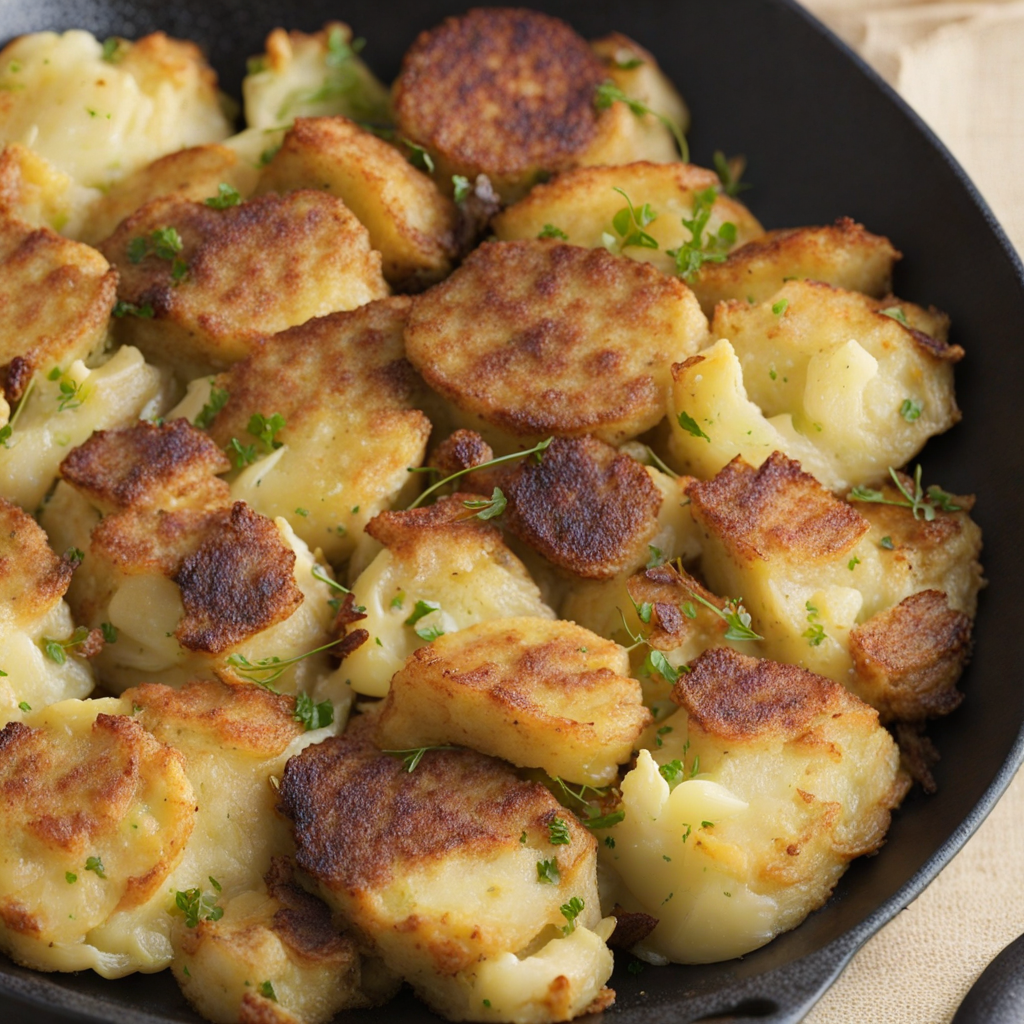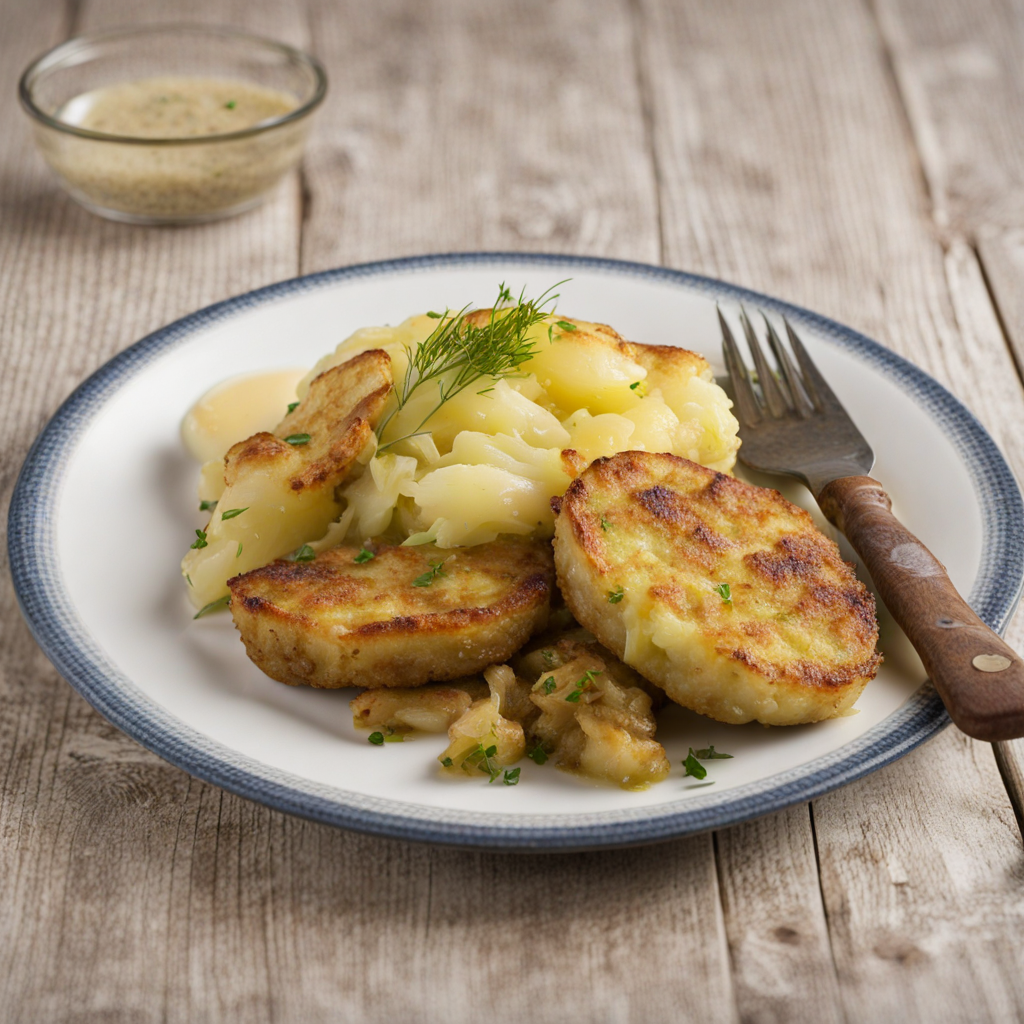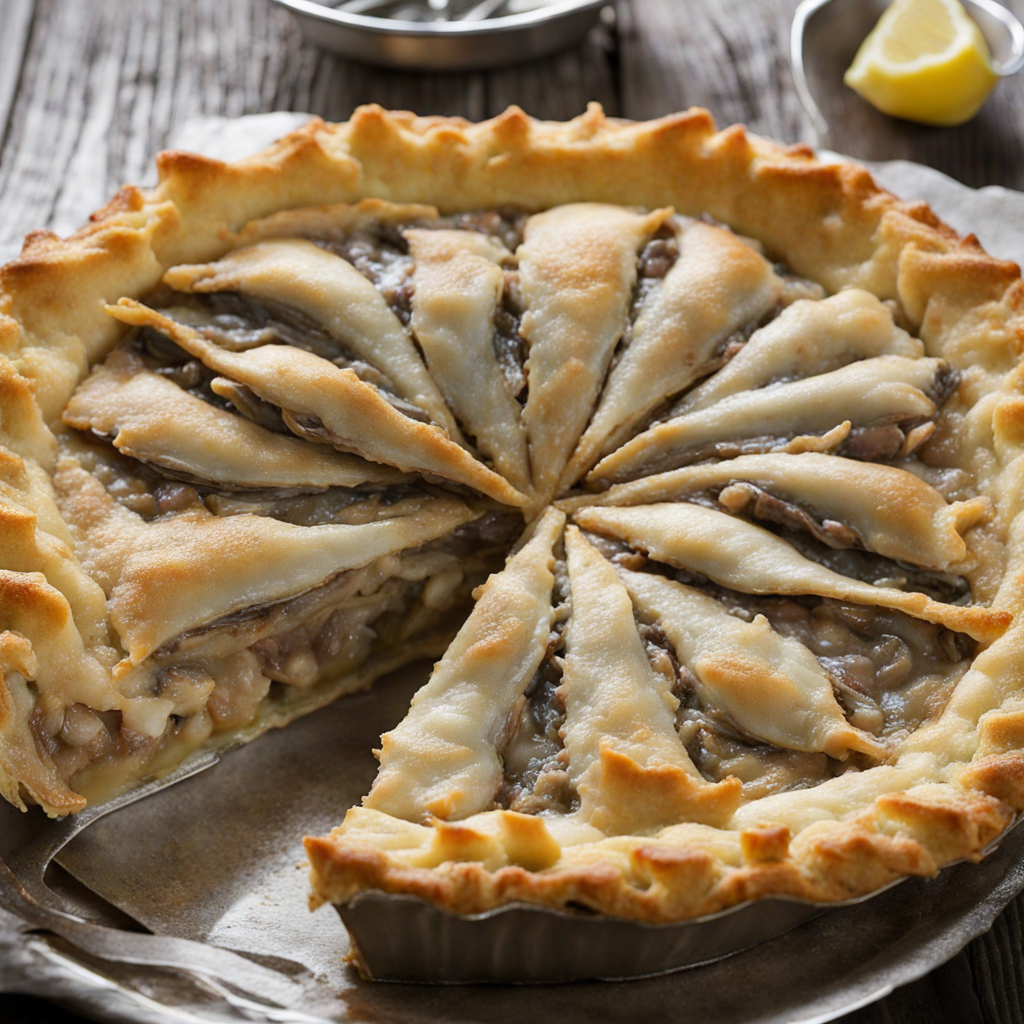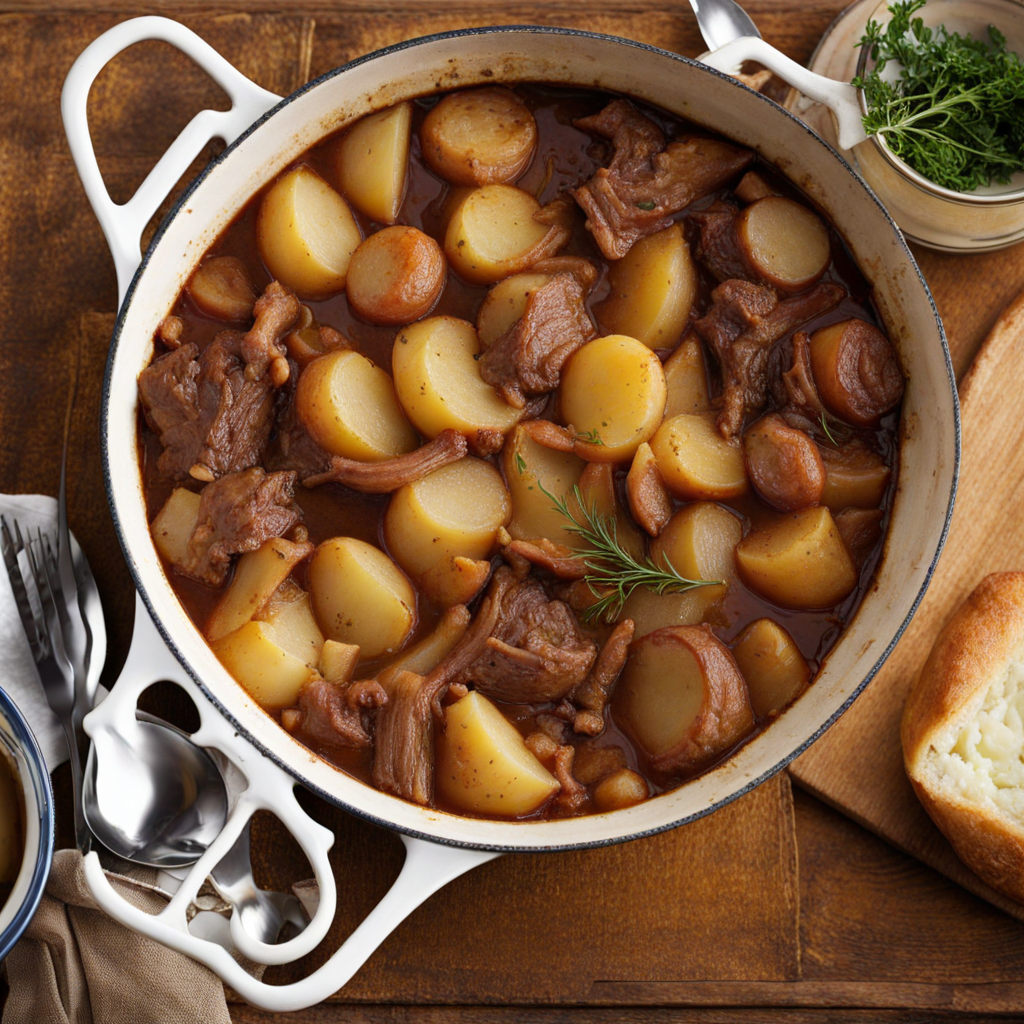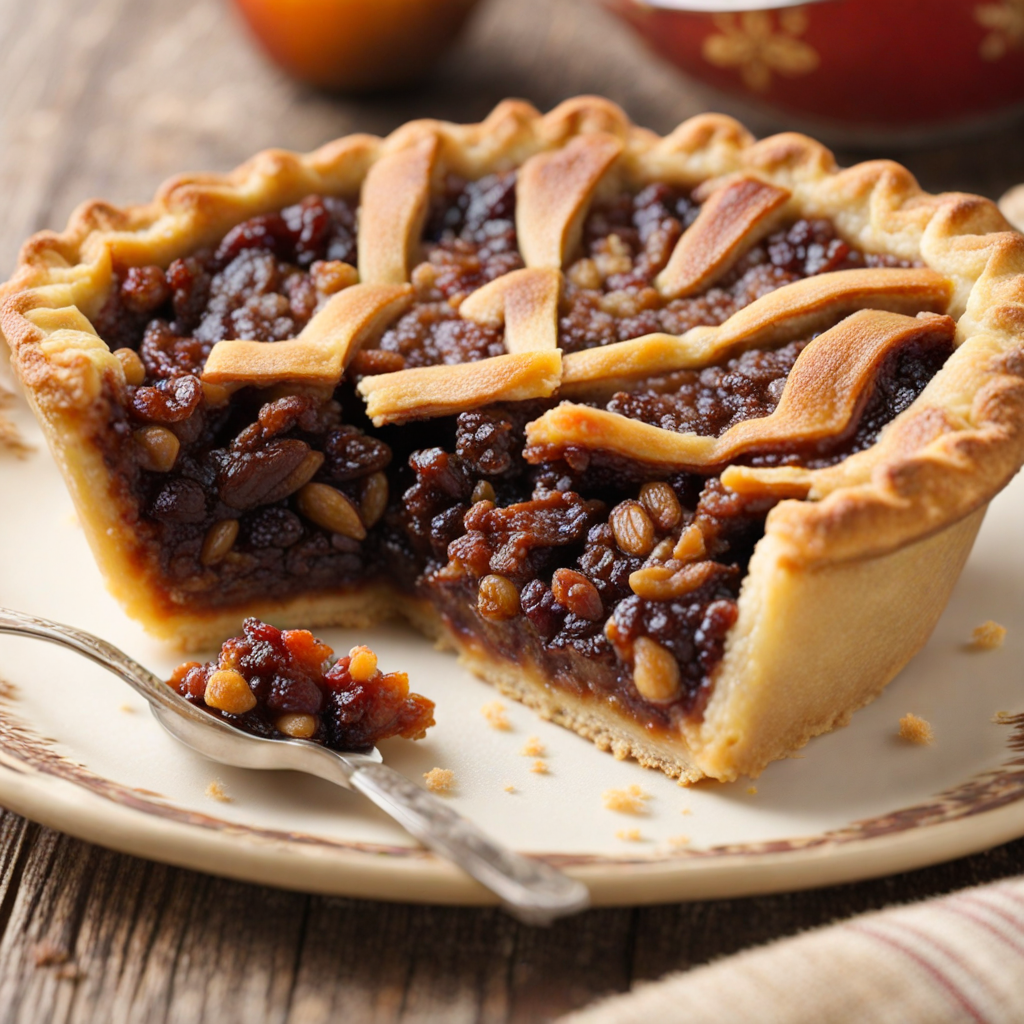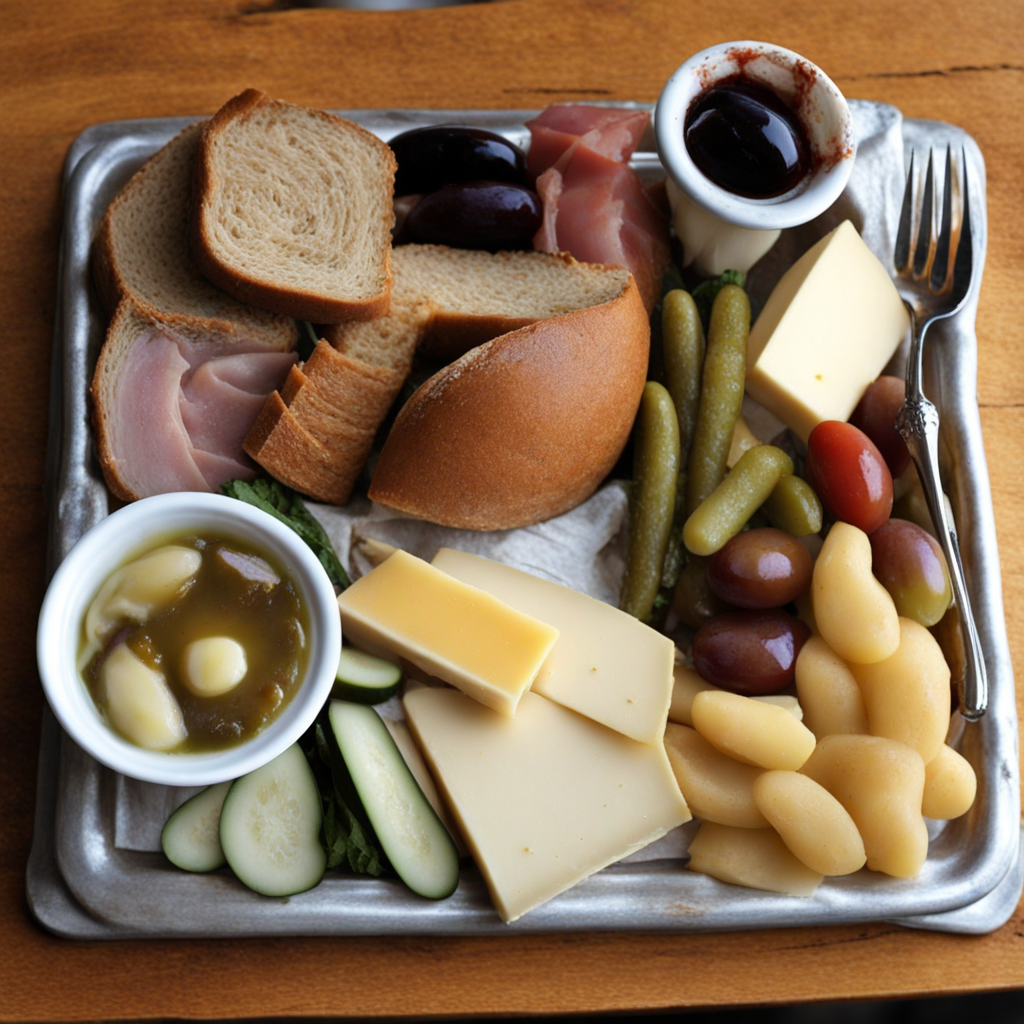Bubble and Squeak
Bubble and Squeak is a delightful and hearty dish from the United Kingdom, traditionally made from leftover vegetables, especially potatoes and cabbage. The name itself is quite whimsical, derived from the sounds the ingredients make while being cooked in the pan—bubbling and squeaking. This dish often features a medley of other vegetables such as carrots, peas, and onions, all mashed together and then fried until golden brown. The result is a crispy exterior that encases a soft, flavorful filling, making it a comforting meal for any time of day. One of the most appealing aspects of Bubble and Squeak is its versatility. While the classic version highlights the taste of cabbage and potatoes, cooks often get creative by adding whatever leftover vegetables they have on hand. This adaptability not only minimizes food waste but also allows for a unique flavor profile with each preparation. Served hot, the dish can be accompanied by a range of condiments, such as brown sauce or even a fried egg on top, enhancing the overall experience with additional textures and flavors. Traditionally enjoyed as a breakfast or brunch item, Bubble and Squeak has transcended its humble origins and is now celebrated in many British pubs and restaurants. As a dish that embodies the spirit of British comfort food, it offers a hearty and satisfying option for those looking to explore new tastes. The combination of crispy edges and tender vegetables creates a delightful contrast, making each bite a savory treat that is sure to leave a lasting impression on any palate.
How It Became This Dish
The History of Bubble and Squeak: A Culinary Tradition of the United Kingdom #### Origins and Early Development Bubble and Squeak is a traditional British dish that has delighted palates for generations. Its name, whimsical and evocative, is derived from the sounds the ingredients make as they cook together in a frying pan. The dish primarily consists of leftover vegetables, particularly potatoes and cabbage, which are pan-fried until crispy and golden. While the exact origins of the dish are somewhat obscure, its roots can be traced back to the 18th century, a time when the practice of frugality in cooking was paramount. During the 1700s, England was experiencing significant social and economic changes. The agricultural revolution and the rise of urban centers led to an increased focus on utilizing every bit of food available. Leftovers became a staple of household cooking, and Bubble and Squeak emerged as a delicious solution to the problem of food waste. Originally, the dish was made from the remnants of a Sunday roast, particularly the vegetables that accompanied the meat. #### Cultural Significance As a reflection of British culinary pragmatism, Bubble and Squeak embodies the traditional values of thriftiness and resourcefulness. In a society where food scarcity was a real concern, making the most out of leftovers was not only practical but also a way to demonstrate culinary skill. The dish became a symbol of home-cooked meals and domestic life, often associated with the warmth of family gatherings and the hearth. The dish's versatility also contributed to its cultural significance. While the base ingredients of potatoes and cabbage are consistent, many variations have emerged, incorporating other leftover vegetables like carrots, peas, or Brussels sprouts. This adaptability made Bubble and Squeak a favorite among families, as it could be tailored to suit individual tastes and preferences. In the 19th century, as the Industrial Revolution transformed British society, the dish began to gain popularity beyond the home kitchen. It made its way into working-class pubs and eateries, where it was offered as a hearty, inexpensive meal for laborers. This period marked a shift in perception, as Bubble and Squeak transitioned from a mere leftover dish to a beloved staple of British cuisine. #### Evolution through the Ages The late 19th and early 20th centuries saw the rise of culinary books and the formalization of recipes, which helped to standardize many traditional dishes, including Bubble and Squeak. Cookbooks began to include recipes that emphasized the use of specific ingredients, techniques, and cooking times. As the dish became more established, it also began to appear in various regional adaptations, with each area adding its unique twist based on local produce and culinary traditions. Post-World War II Britain brought about significant changes in the food landscape. Rationing had instilled a sense of resourcefulness in British cooks, and Bubble and Squeak flourished during this time. It became a symbol of resilience, representing the ability to create something delicious from limited resources. The dish was often served with a fried egg on top, a combination that remains popular today. As the years rolled on, the 1960s and 70s introduced a culinary revolution in the UK, with the advent of international cuisines and a growing interest in gourmet dining. While many traditional dishes faced the threat of being overshadowed, Bubble and Squeak managed to retain its place in the hearts of the British people. Its humble origins and comforting flavors resonated with nostalgia, prompting a renewed interest in traditional recipes. #### Modern Interpretations and Popularity In recent decades, there has been a resurgence of interest in traditional British food, driven by the growing movement toward sustainability and local sourcing. Chefs and home cooks alike have sought to honor culinary heritage while incorporating contemporary techniques and flavors. Bubble and Squeak has benefitted from this revival, with restaurants and gastropubs often featuring creative interpretations of the dish. Modern variations might include the addition of spices, herbs, or even meats, transforming the dish into a more gourmet offering. Some chefs have experimented with different types of potatoes, such as sweet potatoes or even purple potatoes, adding vibrant colors and new flavors. Additionally, Bubble and Squeak has found its way into brunch menus, often served alongside poached eggs, smoked salmon, or even a dollop of hollandaise sauce. The dish has also gained international recognition, appearing in food festivals and events celebrating British cuisine. Its simplicity and heartiness make it an appealing option for those exploring traditional British fare. Furthermore, with the increasing popularity of “comfort food,” Bubble and Squeak stands as a testament to the enduring appeal of simple, satisfying meals. #### Conclusion: A Dish of Legacy and Love Today, Bubble and Squeak is more than just a dish; it represents a culinary legacy steeped in history, culture, and the spirit of home cooking. It captures the essence of British life—its ability to adapt, innovate, and cherish the past. As we navigate a world that often emphasizes fast-paced living and convenience, Bubble and Squeak serves as a delicious reminder of the beauty of slow cooking, the importance of sustainability, and the comfort of family traditions. In a time where food waste is a growing concern, the dish stands as a model of how to honor the ingredients we have and create something delightful from them. Whether enjoyed at a family dinner, a pub lunch, or a trendy café, Bubble and Squeak embodies the heart of British cuisine—a dish that is not only a reflection of the past but also a promising symbol for the future of cooking and eating.
You may like
Discover local flavors from United Kingdom


